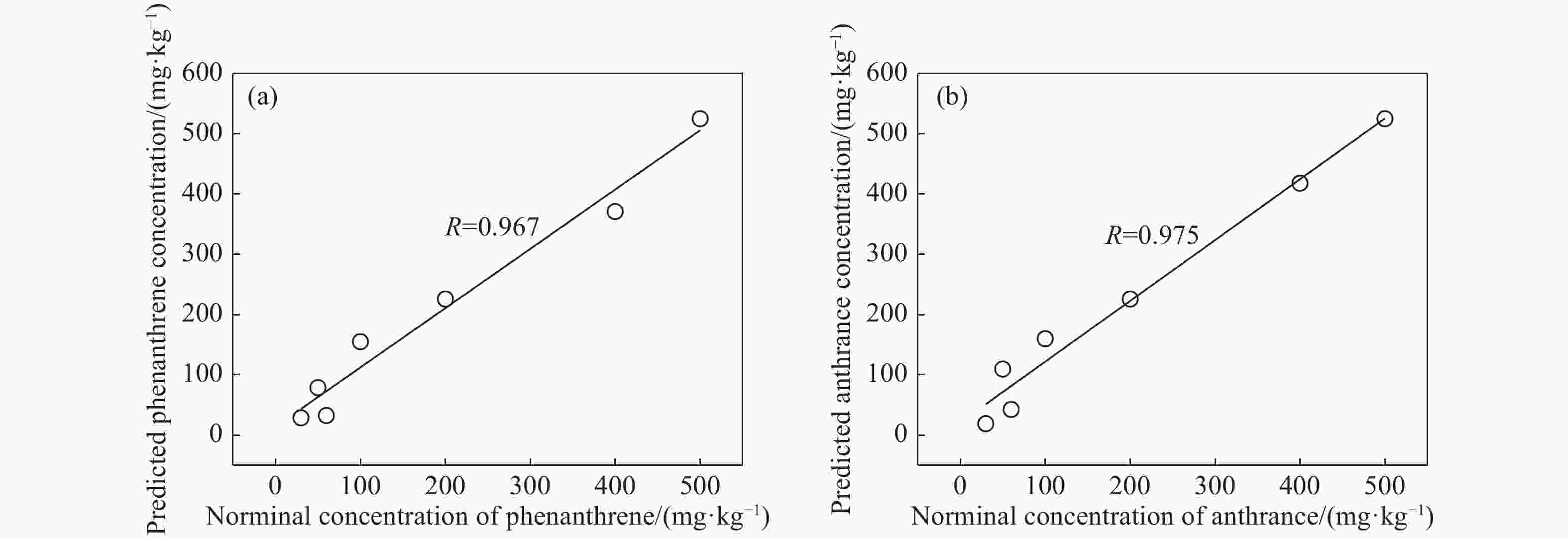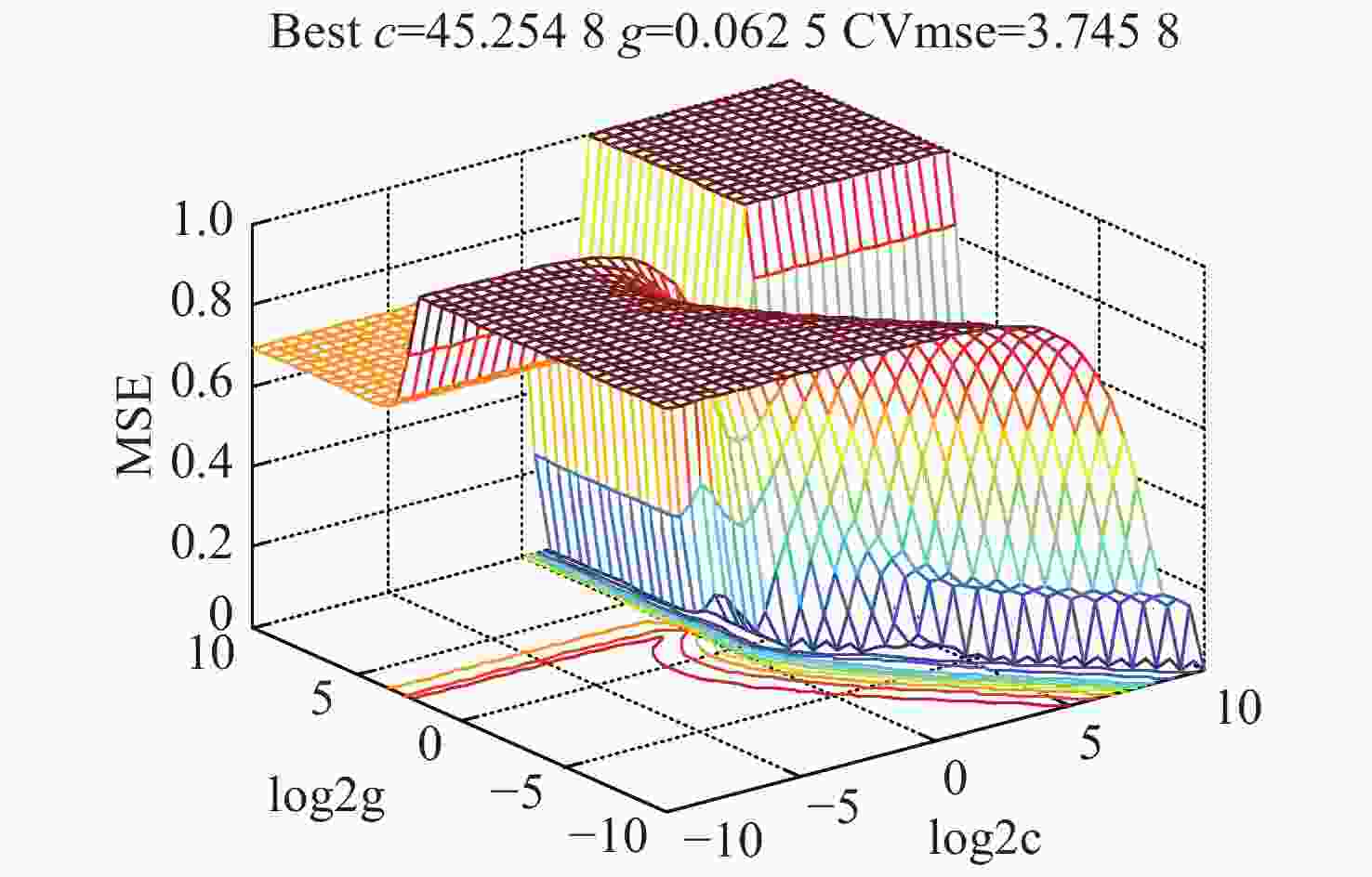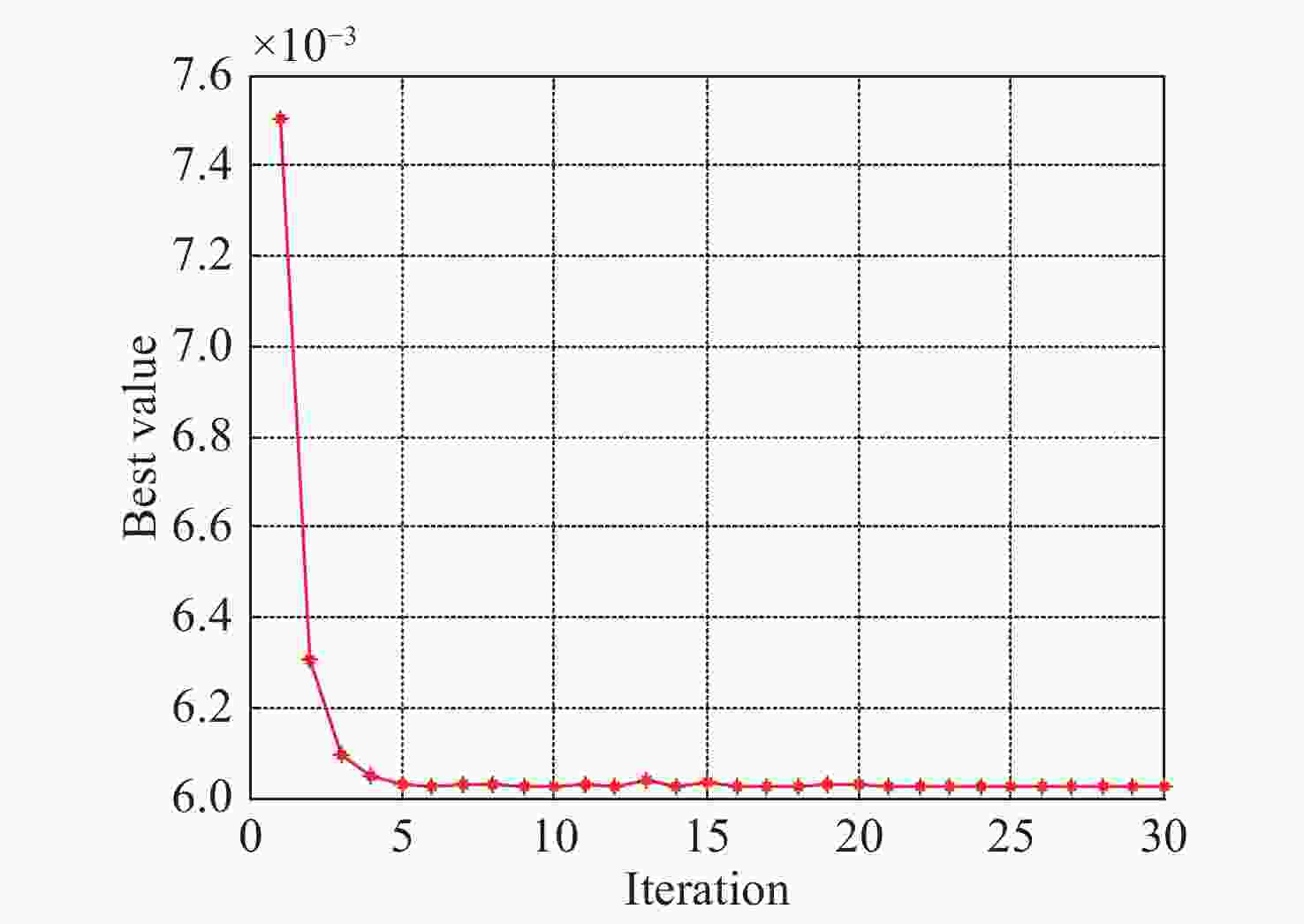Study on quantitative methods of laser-induced two-dimensional fluorescence spectroscopy of multicomponent PAHs in soils
doi: 10.37188/CO.2020-0059
-
摘要: 激光诱导荧光技术具有实时、快速的优势,并且无需对样品做预处理,是土壤多环芳烃定量分析检测的一种重要分析手段。然而土壤中多环芳烃种类繁多,激光诱导荧光光谱重叠严重,在无法进行化学分离的情况下实现土壤中多环芳烃的精确定量是难点之一。本文采用266 nm可移动激光诱导荧光系统获取了农田土壤多环芳烃的荧光光谱,研究了基于单变量线性回归、加权非负最小二乘多元线性回归和支持向量回归的多组分多环芳烃定量分析方法。结果表明:采用单变量线性回归,蒽和菲的相关系数均小于0.90,平均相对误差均大于20%;与单变量线性回归相比,加权非负最小二乘多元线性回归提高了两组分多环芳烃污染土壤中蒽和菲的预测精度,但在多组分多环芳烃污染土壤中的平均相对误差仍在20%以上。最后,采用GWO-DE优化的支持向量机回归模型分析了多组分多环芳烃污染土壤中的蒽和菲,蒽的平均相对误差由多元线性回归的23.1%下降至5.02%,菲的平均相对误差从20.8%下降到4.83%。该研究为提高土壤多组分多环芳烃激光诱导荧光定量分析的准确性提供了方法支撑。Abstract: Laser-Induced Fluorescence(LIF) has become a powerful technology for quantitative analysis of Polycyclic Aromatic Hydrocarbons(PAHs) in soils due to its fast detection speed and low operational cost, without sample preparation. However, there are many types of PAHs in soils, and their similar structures lead to overlapped issues in their laser-induced fluorescence spectra. It is challenging to quantify a single PAH in complicated soil without the chemical separation. In this paper, fluorescence spectra of PAHs in agricultural soil are obtained by a 266 nm mobile LIF system, and quantification methods are investigated for PAHs, based on univariate linear regression, weighted non-negative least squares Multivariate Linear Regression(MRL) and Support Vector Regression(SVR). The results show that the correlation coefficients of anthracene and phenanthrene are both less than 0.90, and the average relative errors are both more than 20% by using univariate linear regression. Compared with univariate linear regression, MLR improves the prediction accuracy of anthracene and phenanthrene in the soil contaminated with bi-component PAHs. However, the average relative errors are still over 20% in the soil contaminated with multicomponent PAHs. Finally, a SVR model optimized by grey wolf optimization combined with differential evolution(GWO-DE) is applied for concentration measurement of anthracene and phenanthrene in agricultural soil contaminated with multicomponent PAHs. The average relative error of anthracene decreases from 23.1% (MLR) to 5.02%, while in the case of phenanthrene decreases from 20.8% (MLR) to 4.83%. This study provides an efficient method to improve the accuracy of LIF in quantifying multicomponent PAHs in soils.
-
Table 1. Characteristic fluorescence peaks for univariate regression
PAHs analyte characteristic fluorescence peak/nm AN+PY AN 404 PY 484 PHE+PY PHE 347 PY 484 AN+PY+PHE AN 404 PY 484 PHE 347 Table 2. Results of univariate quantitative analysis
PAHs analyte correlation coefficient average relative error (%) AN+PY AN 0.867 23.5 PY 0.956 14.9 PHE+PY PHE 0.882 24.7 PY 0.961 13.0 AN+PY+PHE AN 0.896 25.1 PY 0.939 16.1 PHE 0.873 26.4 Table 3. Characteristic fluorescence peaks or data points for multivariate regression
PAHs analyte characteristic fluorescence peaks(nm) AN+PY AN 384, 393, 396, 400,404, 406, 408, 416 PY 476, 480, 484, 488, 492 PHE+PY PHE 345, 347, 349, 361, 365, 372, 381, 385 PY 476, 480, 484, 488, 492 AN+PY+PHE AN 384, 385, 393, 396, 400, 404, 406, 408 PY 476, 480, 484, 488, 492 PHE 347, 363, 365, 367, 380, 384, 385, 390 Table 4. Results of MLR quantitative analysis
PAHs analyte correlation coefficient average relative error (%) AN+PY AN 0.975 11.7 PY 0.977 12.4 PHE+PY PHE 0.967 11.8 PY 0.963 12.4 AN+PY+PHE AN 0.910 23.1 PY 0.952 15.9 PHE 0.938 20.8 -
[1] ABDEL-SHAFY H I, MANSOUR M S M. A review on polycyclic aromatic hydrocarbons: source, environmental impact, effect on human health and remediation[J]. Egyptian Journal of Petroleum, 2016, 25(1): 107-123. doi: 10.1016/j.ejpe.2015.03.011 [2] KIM K H, JAHAN S A, KABIR E, et al. A review of airborne polycyclic aromatic hydrocarbons (PAHs) and their human health effects[J]. Environment International, 2013, 60: 71-80. doi: 10.1016/j.envint.2013.07.019 [3] ABBAS I, BADRAN G, VERDIN A, et al. Polycyclic aromatic hydrocarbon derivatives in airborne particulate matter: sources, analysis and toxicity[J]. Environmental Chemistry Letters, 2018, 16(2): 439-475. doi: 10.1007/s10311-017-0697-0 [4] ODABASI M, OZGUNERGE FALAY E, TUNA G, et al. Biomonitoring the spatial and historical variations of persistent organic pollutants (POPs) in an industrial region[J]. Environmental Science &Technology, 2015, 49(4): 2105-2114. [5] BI X, LUO W, GAO J J, et al. Polycyclic aromatic hydrocarbons in soils from the Central-Himalaya region: distribution, sources, and risks to humans and wildlife[J]. Science of the Total Environment, 2016, 556: 12-22. doi: 10.1016/j.scitotenv.2016.03.006 [6] SUMAN S, SINHA A, TARAFDAR A. Polycyclic aromatic hydrocarbons (PAHs) concentration levels, pattern, source identification and soil toxicity assessment in urban traffic soil of Dhanbad, India[J]. Science of the Total Environment, 2016, 545-546: 353-360. doi: 10.1016/j.scitotenv.2015.12.061 [7] HUMEL S, SCHMIDT S N, SUMETZBERGER-HASINGER M, et al. Enhanced accessibility of polycyclic aromatic hydrocarbons (PAHs) and heterocyclic PAHs in industrially contaminated soil after passive dosing of a competitive sorbate[J]. Environmental Science &Technology, 2017, 51(14): 8017-8026. [8] KUŚMIERZ M, OLESZCZUK P, KRASKA P, et al. Persistence of polycyclic aromatic hydrocarbons (PAHs) in biochar-amended soil[J]. Chemosphere, 2016, 146: 272-279. doi: 10.1016/j.chemosphere.2015.12.010 [9] JONES K C, STRATFORD J A, TIDRIDGE P, et al. Polynuclear aromatic hydrocarbons in an agricultural soil: long-term changes in profile distribution[J]. Environmental Pollution, 1989, 56(4): 337-351. doi: 10.1016/0269-7491(89)90079-1 [10] SHANG Q B, QUAN Y H, XU L SH, et al. Spatial distribution and genesis of polycyclic aromatic hydrocarbons (PAHs) in the surface soil in China[J]. Journal of Ecology and Rural Environment, 2019, 35(7): 917-924. [11] LI Y, CUI X, LI ZH CH, et al. Purification and enrichment of polycyclic aromatic hydrocarbons pollutions in oil-field water by column clean-up coupled with dispersive liquid-liquid microextraction[J]. Chinese Journal of Analytical Chemistry, 2018, 46(5): 787-795. [12] WANG CH H, WU SH H, ZHOU SH L, et al. Characteristics and source identification of polycyclic aromatic hydrocarbons (PAHs) in urban soils: a review[J]. Pedosphere, 2017, 27(1): 17-26. doi: 10.1016/S1002-0160(17)60293-5 [13] LI X L, LI Q X, AN SH Q, et al. Determination of fluorine in soil sample by X-ray fluorescence spectrometry[J]. Chinese Journal of Analytical Chemistry, 2019, 47(11): 1864-1869. [14] KANG Q W, ZHANG G, CHAI R T, et al. Synthesis of carbon nanodots for detection of aluminum ion with fluorescence enhancement[J]. Chinese Journal of Analytical Chemistry, 2019, 47(12): 1901-1908. [15] LEE C K, KO E J, KIM K W, et al. Partial least square regression method for the detection of polycyclic aromatic hydrocarbons in the soil environment using laser-induced fluorescence spectroscopy[J]. Water,Air,and Soil Pollution, 2004, 158(1): 261-275. doi: 10.1023/B:WATE.0000044858.39836.e2 [16] OKPARANMA R N, MOUAZEN A M. Determination of total petroleum hydrocarbon (TPH) and polycyclic aromatic hydrocarbon (PAH) in soils: a review of spectroscopic and nonspectroscopic techniques[J]. Applied Spectroscopy Reviews, 2013, 48(6): 458-486. doi: 10.1080/05704928.2012.736048 [17] YANG R J, SHANG L P, BAO ZH B, et al. Feasibility of using laser-induced fluorescence to detect directly polycyclic aromatic hydrocarbons in soil[J]. Spectroscopy and Spectral Analysis, 2011, 31(8): 2148-2150. [18] HE J, SHANG L P, DENG H, et al. Detection system of 250 nm laser induce fluorescence of polycyclic aromatic hydrocarbons in soil[J]. Opto-Electronic Engineering, 2014, 41(9): 51-55. [19] SARKAR S K. Some multivariate linear regression testing problems with additional observations[J]. Journal of Multivariate Analysis, 1981, 11(4): 556-567. doi: 10.1016/0047-259X(81)90096-8 [20] BASAK D, PAL S, PATRANABIS D C. Support vector regression[J]. Neural Information Processing-Letters and Reviews, 2007, 11(10): 203-224. [21] LU H X, XU M CH, ZHANG W D, et al. Identification of citrus Huanglongbing based on contractive auto-encoder combined extreme learning machine[J]. Chinese Journal of Analytical Chemistry, 2019, 47(5): 652-660. [22] FENG Y, PENG CH Y, ZHANG SH W, et al. Preparation of graphene oxide grafted silica monolith and application in determination of polycyclic aromatic hydrocarbons[J]. Chinese Journal of Analytical Chemistry, 2019, 47(6): 814-822. [23] ZHAI M Y, ZHAO Y, GAO H, et al. Quantitative study on articular cartilage by fourier transform infrared spectroscopic imaging and support vector machine[J]. Chinese Journal of Analytical Chemistry, 2018, 46(6): 896-901. [24] MIRJALILI S, MIRJALILI S M, LEWIS A. Grey wolf optimizer[J]. Advances in Engineering Software, 2014, 69: 46-61. doi: 10.1016/j.advengsoft.2013.12.007 [25] ZHU A J, XU CH P, LI ZH, et al. Hybridizing grey wolf optimization with differential evolution for global optimization and test scheduling for 3D stacked SoC[J]. Journal of Systems Engineering and Electronics, 2015, 26(2): 317-328. doi: 10.1109/JSEE.2015.00037 -






 下载:
下载:








